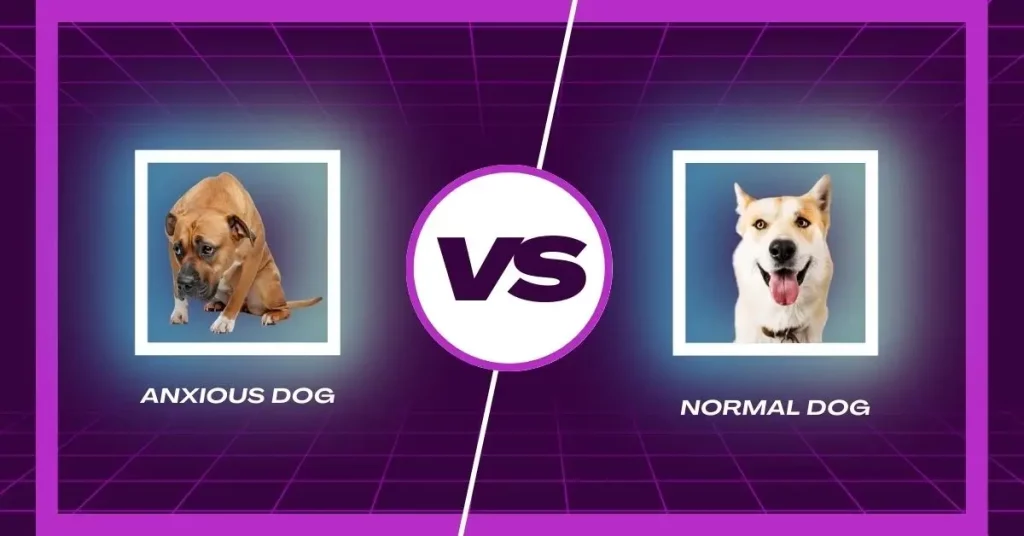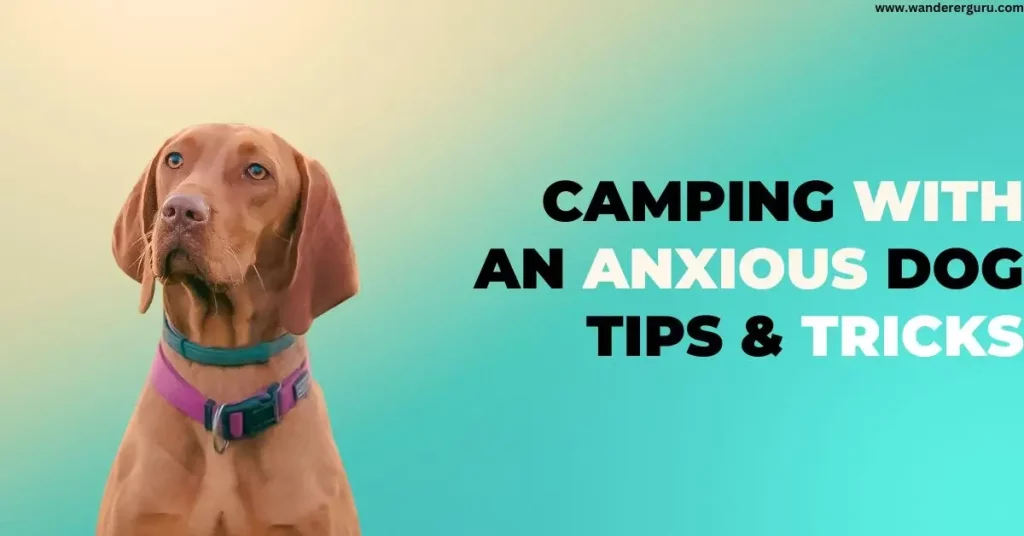Camping with an anxious dog is not a problem if done in a proper way. Anxiety in dogs can manifest in various ways, such as trembling, excessive barking, restlessness, or even trying to escape. Nevertheless, properly preparing and understanding can create a positive and enjoyable camping experience for your anxious canine friend. This comprehensive guide will explore essential tips and strategies to ensure your camping trip is stress-free for you and your furry companion.
Bonus:
HOW TO CAMP WITH A CAT? THE ULTIMATE GUIDE
Tips for camping with an anxious dog
Camping with an anxious dog can be daunting task if not done properly. You need professional tips in order to have a enjoyful experience with your dog. Follow the below mentioned tips for amazing and comfortable camping journey with your dog:
Choose the Right Campsite
Selecting the appropriate campsite is crucial when camping with an anxious dog. Look for campgrounds that are pet-friendly and offer a peaceful environment. Avoid busy or crowded locations, as these might overwhelm your dog and exacerbate their anxiety. Additionally, opt for sites with ample space for your dog to explore without feeling confined.
Familiarize Your Dog with Camping Gear
Introduce your dog to camping gear gradually and positively. Set up the tent in your backyard and allow your dog to explore it at their own pace. Reward them with treats and praise for any signs of curiosity or comfort around the equipment. Familiarizing your dog with the camping gear before the trip will help reduce their anxiety when encountering these items in a new environment.
Practice Camping in Controlled Settings
If your dog’s anxiety is severe, consider practicing camping in controlled settings first. Start with short trips to nearby parks or camping grounds. This will make your dog accustomed to the outdoor environment while being close to home. Gradually increase the duration of these practice sessions to build your dog’s confidence.
Pack Familiar Items
Bring your dog’s favorite toys, blanket, or bed from home. These familiar items can provide a sense of comfort and security amidst the unfamiliar surroundings of the campsite. The scent of these familiar items can help soothe your dog and ease their anxiety.
Keep a Consistent Routine
Dogs thrive on routine, and a camping trip can disrupt their regular schedule. Try to maintain consistency in feeding times, walks, and playtime as much as possible. A consistent routine will help your anxious dog feel more at ease in the new environment.
Exercise and Mental Stimulation
A tired dog is often a less anxious dog. Prioritize physical activities and mental stimulation during your camping trip. Engage your dog in hikes, fetch games, or puzzle toys to keep their mind and body active. By expending excess energy, you can reduce your dog’s anxiety levels.
Observe and Respond to Triggers
Pay close attention to your dog’s body language and behavior during the camping trip. Identify triggers that may cause anxiety, such as loud noises, unfamiliar animals, or new people. When you notice distress, remove your dog from the triggering situation and offer comfort and reassurance.
Create a Safe Space
Set up a designated safe space for your dog within the campsite. Use a portable dog crate or create a cozy spot with their bed and favorite toys. This safe space will serve as a retreat where your dog can relax and feel secure when the outside environment becomes overwhelming.
Stay Calm and Relaxed
Dogs are incredibly attuned to their owners’ emotions. It can help reassure your anxious dog that everything is okay if you remain calm and relaxed. Avoid displaying frustration or impatience, which may heighten your dog’s anxiety.
Anxious dog vs Normal dog

The difference between anxious dog and normal dog is that an anxious dog displays restlessness, trembling, and excessive barking, and may try to escape in stressful situations. In contrast, a normal dog tends to be calmer, more relaxed, and more confident in various environments. Anxious dogs require extra care and attention to help them feel secure and safe, while normal dogs easily adapt to new situations. Recognizing these differences is crucial for pet owners to provide appropriate support and create a stress-free environment for their furry companions. By understanding their needs, anxious dogs can enjoy outdoor activities like camping with patience, gradual exposure, and a consistent routine, just like normal dogs, fostering a stronger bond between pet and owner.
What to bring for the safety of an anxious dogs?
For the safety of anxious dogs, bring familiar items such as their favorite toys, blanket, or bed to provide comfort. Pack a portable dog crate or create a designated safe space at the campsite. Include a leash and harness for walks, ensuring your dog stays close and secure. Bring calming aids like an anxiety wrap or calming pheromone spray. Keep a pet first-aid kit with essentials like bandages and antiseptic in case of any accidents. Additionally, carry enough food, water, and medications your dog may need during the trip for a stress-free camping experience.
Which weather is best for camping with an anxious dog?
The best weather for camping with an anxious dog is mild and temperate. Avoiding extreme weather conditions, such as scorching heat or cold, is essential to ensure your dog’s comfort and well-being. Opt for pleasant temperatures with moderate humidity levels. Spring and fall are often ideal seasons for camping with anxious dogs, as the weather is typically not too hot or cold, and the surroundings offer a calming ambiance. Remember to monitor your dog for discomfort and provide ample shade, water, and suitable sleeping arrangements during the camping trip.
How to calm my dog at night?
Establish a comfortable sleeping area with familiar bedding to calm your dog at night. Create a soothing environment using white noise or calming music to mask unfamiliar sounds. Consider using pheromone products or natural calming aids to promote relaxation. Stick to a consistent bedtime routine to signal it’s time to rest. Provide ample exercise during the day to help them unwind. Spending time together before bedtime, such as gentle petting or cuddling, can also reassure your dog and help them feel safe and secure. For more ideas, visit my Pinterest.
Conclusion
Camping with an anxious dog can be a rewarding experience with proper preparation and understanding. Choosing the right campsite, familiarizing your dog with camping gear, and maintaining a consistent routine are essential for a stress-free trip. Pack familiar items, provide ample exercise and mental stimulation, and create a safe space for your dog to retreat when overwhelmed. Observing and responding to triggers and staying calm will further aid in alleviating anxiety. By following these guidelines, you can create lasting memories and a stronger bond with your anxious dog, making camping a positive and enjoyable adventure for both of you.
FAQs
Q1: Can a dog wear clothes if he has anxiety?
A: Yes, dogs with anxiety can wear clothes as they may provide a sense of comfort and security. Anxiety wraps or vests, designed explicitly for anxious dogs, apply gentle pressure to help reduce anxiety. However, it’s essential to introduce clothing gradually and ensure it fits properly without causing any distress or restricting their movement. Always observe your dog’s behavior when they wear clothes and seek professional advice to ensure it’s a positive experience for them.
Q2: What are the risks of camping with a dog?
A: The risks of camping with a dog include encounters with wildlife that may threaten their safety, exposure to poisonous plants or insects, unpredictable weather conditions, and potential injuries from rough or unfamiliar terrain. Additionally, anxious or stressed dogs may exhibit unpredictable behavior, affecting their interactions with other campers or dogs. Proper planning, supervision, and taking necessary precautions can help mitigate these risks and ensure a safe and enjoyable camping experience for both you and your furry companion.
Q3: Can you can camp with the dog in your Camping Cot?
A: Yes, depending on size and weight limit, you can camp with your dog in your camping cot. Some camping cots are designed to accommodate both humans and pets, providing a comfortable elevated sleeping space for your dog. It’s essential to introduce your dog to the cot before the camping trip and ensure they are comfortable and secure. Always supervise your dog using the cot to ensure their safety and avoid any potential accidents.
Q4: How to reduce traveling fear in dogs?
A: To reduce traveling fear in dogs, start with short car rides and gradually increase the duration. Offer treats and praise during rides to create positive associations. Use a secure travel crate or harness for safety. Consider calming aids if needed, and be patient with your dog’s progress.
Bonus:

